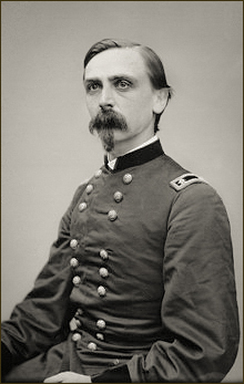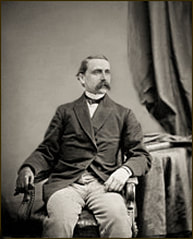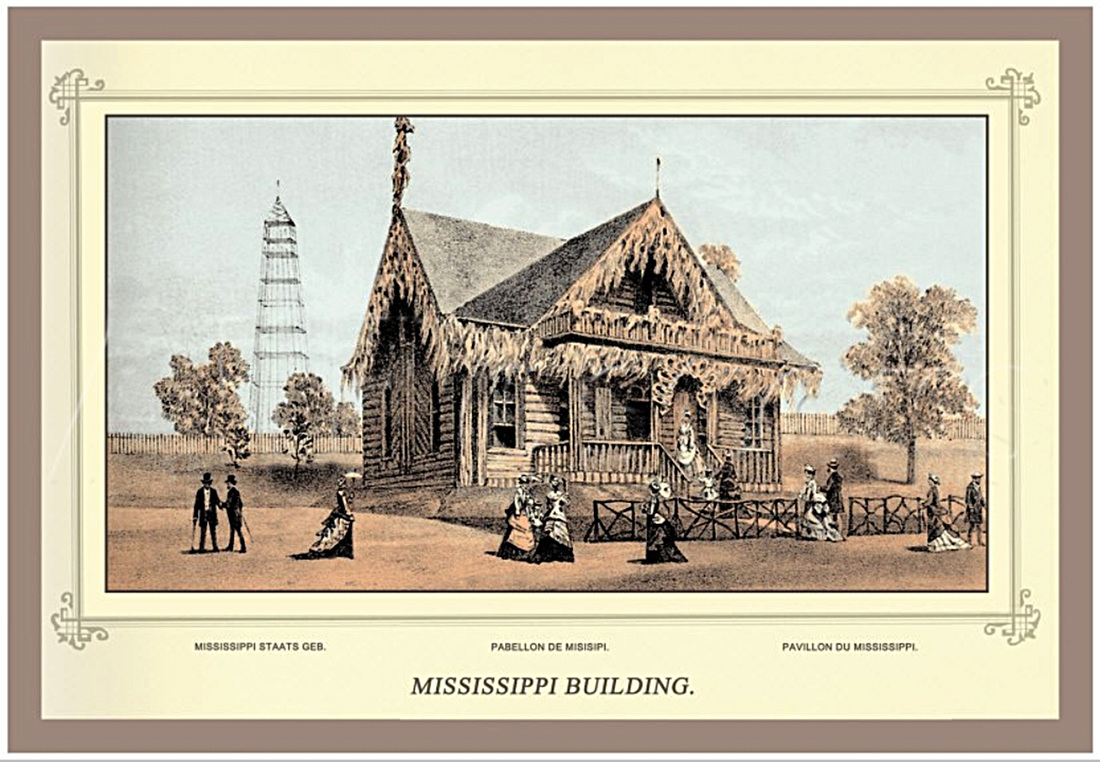The CENTENNIAL of 1876
How a Union General, and Medal of Honor holder became the governor of Mississippi twice, and promoted the Timber Industry through Mississippi’s participation in the 1876 Centennial Celebration.
The International Exhibition of Arts, Manufactures and Products of the Soil and Mine, more simply known as “the Centennial,” opened in Fairmount Park to great fanfare on May 10, 1876, and closed with equal flourish six months later. Modeled after the Crystal Palace Great Exhibition in London in 1851, and the first in a long line of major “World’s Fairs” in the United States, the Centennial exhibited national pride and belief in the importance of education and progress through industrial innovation. An additional mission of the Centennial grew from a desire to forgive and forget the Civil War.
“Only Mississippi participated from the deep South, frustrating the attempt of the Centennial Commission and the Federal government to present a picture of a country reunited.” philadelphiaencyclopedia.org
“Only Mississippi participated from the deep South, frustrating the attempt of the Centennial Commission and the Federal government to present a picture of a country reunited.” philadelphiaencyclopedia.org

Mississippi’s participation in the 1876 Centennial celebration is attributed to Adelbert Ames who has been much maligned in Mississippi history as a carpetbagger.
In 1868 Congress appointed War Hero and Medal of Honor holder, General Adelbert Ames, the provisional Governor of Mississippi. His command included the Military District of Mississippi and Arkansas. In this position he promoted the entry of both Mississippi and Arkansas in the 1876 Centennial Celebration by constructing exhibition buildings.
The Republican controlled legislature passed a bill making Ames head of the Centennial committee with authority to appoint all the members. They decided that a modest log cabin constructed entirely from Mississippi’s vast timber resources would be the best way to promote that industry.
At that time the rest of the Deep South, still seething about reconstruction, had no interest in participating. The memory of federal troops occupying the southern states was remained vivid as the political landscape was shifting.
Federal troops were withdrawn and the Black and Tan Republican legislature was ousted by white Democrats who immediately threatened Ames with impeachment. They took over his Centennial Committee and replaced him with the speaker of the house as well as firing and replacing all his committee members. However, they were too late to stop Mississippi’s participation so they took credit for it and turned back what money of the appropriated $5,000 was left. As a result, Ames resigned and returned to his military career which was to include leading a charge on San Juan Hill in the Spanish-American War.
In 1868 Congress appointed War Hero and Medal of Honor holder, General Adelbert Ames, the provisional Governor of Mississippi. His command included the Military District of Mississippi and Arkansas. In this position he promoted the entry of both Mississippi and Arkansas in the 1876 Centennial Celebration by constructing exhibition buildings.
The Republican controlled legislature passed a bill making Ames head of the Centennial committee with authority to appoint all the members. They decided that a modest log cabin constructed entirely from Mississippi’s vast timber resources would be the best way to promote that industry.
At that time the rest of the Deep South, still seething about reconstruction, had no interest in participating. The memory of federal troops occupying the southern states was remained vivid as the political landscape was shifting.
Federal troops were withdrawn and the Black and Tan Republican legislature was ousted by white Democrats who immediately threatened Ames with impeachment. They took over his Centennial Committee and replaced him with the speaker of the house as well as firing and replacing all his committee members. However, they were too late to stop Mississippi’s participation so they took credit for it and turned back what money of the appropriated $5,000 was left. As a result, Ames resigned and returned to his military career which was to include leading a charge on San Juan Hill in the Spanish-American War.

The United States celebrated its 100th birthday with the Centennial Exhibition of 1876. The deep South, still reeling in post-Civil War reconstruction, had little ambition to take part in a 'Union' event. However, the 'Union' appointed governor of Mississippi, General Adelbert Ames, saw the exposition as a prime opportunity for Mississippi to open markets for its most abundant natural resource. And, the national exposure did attract wealthy industrialists who saw the potential for profit… and a way to get the timber out (the steam engine)… and get to market (a deep water port).
Governor Adelbert Ames left an enduring legacy by ensuring Mississippi to take the lead in participating in our country's first Centennial Celebration in 1876.
Governor Adelbert Ames left an enduring legacy by ensuring Mississippi to take the lead in participating in our country's first Centennial Celebration in 1876.
Mississippi's Log Cabin PAVILION
Rudest in external appearance, homeliest in interior fitting up and furnishing, the building of the State of Mississippi challenges attention by the contrast which it presents with the gay and fanciful structures around it. Whilst the arts of the carpenter, the cabinet-maker, and even of the upholsterer, have been brought to aid in the embellishment of the mansions in which most of the States receive their citizens, Mississippi displays no more of the builder’s art than need be exercised by the emigrant who pitches upon a homestead in the shadows of the woods, and whose residence is a simple log cabin which he himself, although uninstructed in architectural mysteries, can fabricate. The State receives her visitors in a rude shelter which suggests the earliest style of home known to her settlers.
Her accommodations are comprised within a space of 40 x 30 feet. The situation is in the north-western portion of the Centennial enclosure, west of the Japanese building. The outside walls are chiefly of hickory split logs with the bark on. The door-frames and window-frames are made of different qualities of pine.
The doorway affects the Gothic as much as can be done, by the meeting at the centre of two logs rising at slight pitch. The panels of the door are intended to display the great variety in the character of the native woods of Mississippi, those portions of the structure being made of 48 different varieties.
The eaves overhang the walls and the porticoes, and they are fringed with long Spanish moss, which forms so constant a pendant from the great trees which line the banks of the Mississippi River. This substance is arranged in picturesque style, and adds greatly to the rural character of the building.
The balcony is supported by pillars made from the limbs of trees, rustic and of such shapes as nature has permitted, whilst the capitals are gnarled and grotesque knots and roots fantastic in arrangement.
The interior is fitted up with native woods; upon the inner walls, smooth and polished, so as to show the grain and natural color. Pine predominates, but there is great contrast even in that product, which varies in appearance and quality according to the species and portions of the trees from which they were taken, not only in the grain and shadings, but in the substantial color. There are 68 kinds of woods in the interior, distinct from those in the panels of the doors, so that the timber treasures of the State are here shown in 116 varieties. The ornaments of the interior, brackets and other adjuncts are as the forests furnish them, and add to the general interest of the structure.
All the timber used in this house came from Mississippi. Carpenters, citizens of the commonwealth, came with it, and have erected this unique and picturesque cabin. The commissioners from Mississippi are accommodated here. Residents of the State are welcomed, and strangers from all parts of the United States and of the world are courteously received and afforded opportunities to see and examine for themselves. Mississippi Building, Free Library of Philidelphia


